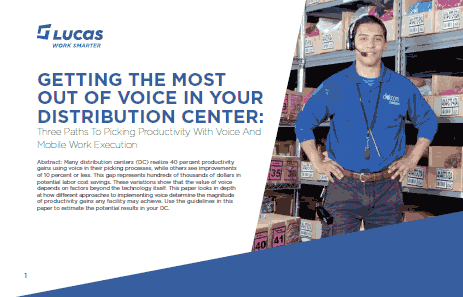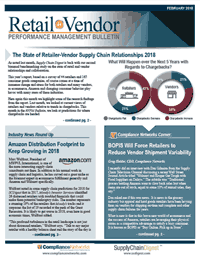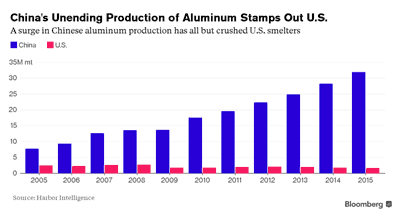 |
March 8, 2018 - Supply Chain Flagship Newsletter |
 |
|
||||||||||||
 |
|
||||||||||||||||||||||||||||||||||||||||||||||||||||||||||||||||||||||||||
|
|||||||||||||||||||||||||||||||||||||||||||||||||||||||||||||||||||||||||||
View Web/Printable Version of this Column |
|||||||||||||||||||||||||||||||||||||||||||||||||||||||||||||||||||||||||||
|
|
|
YOUR FEEDBACK
We received a good handful of emails from our story on a panel of manufacturers talking about doing drop shipping for retailers, many from our friends at RetailWire. A selection can be found below.
Feedback on Vendor Drop Shipping for Retail
![]()
Wow does this feel like "deja vu all over again!" I can remember having countless eerily similar conversations with retailers as they struggled with single-order fulfillment challenges 15 years ago. Some of the "solutions" retailers were deploying sound eerily similar as well.
Regardless of how they get there, however, suppliers will no doubt have to provide retailers with the speed and flexibility that shoppers expect, or retailers will take their business elsewhere, just as shoppers did when retailers failed to keep pace with their expectations.
Dave Bruno
Marketing Director
Aptos

![]()
Going from shipping floor-ready inventory by the pallet to single units to a customer is quite a difference, and the inventory control issues are just the start of the challenge. Whether the supplier puts dedicated inventory into a third-party logistics provider who can do customer pick, pack and ship, or invests in the physical, technical and personnel resources to do it themselves, the overriding question ends up being, who pays for this?
The shopper expects this service for free, and until the cost and gross margin on a product changes to provide this service, "who pays" is really the elephant in the room.
Peter Charness
SVP America
TXT Group

![]()
It is a new ball game. The supplier has to add the capability to ship individual packages to individual addresses. This is quite different than shipping in bulk to distribution centers or even directly to stores. The supplier now has to provide detailed information about each transaction electronically to the retailer, and in real-time whenever possible (we commented on the importance of real-time transaction processing in a previous discussion).
It is new, it is exciting and it is very different from the old way of being a supplier.
Bob Amster
Principal
Retail Technology Group

SUPPLY CHAIN TRIVIA ANSWER
Q: The top seven ocean container carriers control what percent of the total market?
A: 79% by capacity, according to recent analysis from Drewry Shipping.
| © SupplyChainDigest™ 2003-2018. All Rights Reserved. SupplyChainDigest PO Box 714 Springboro, Ohio 45066 |
POWERED BY: XDIMENSION
|












